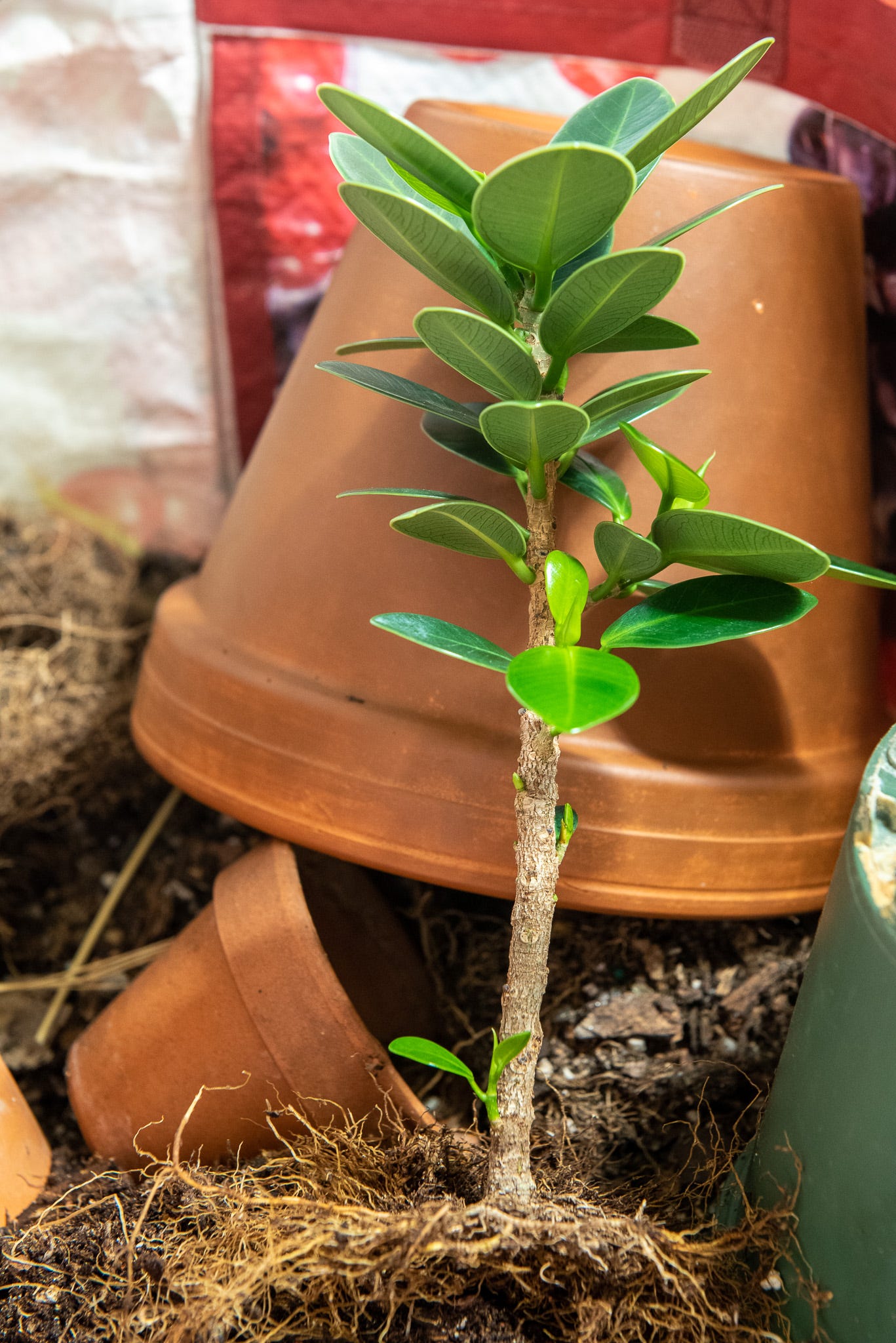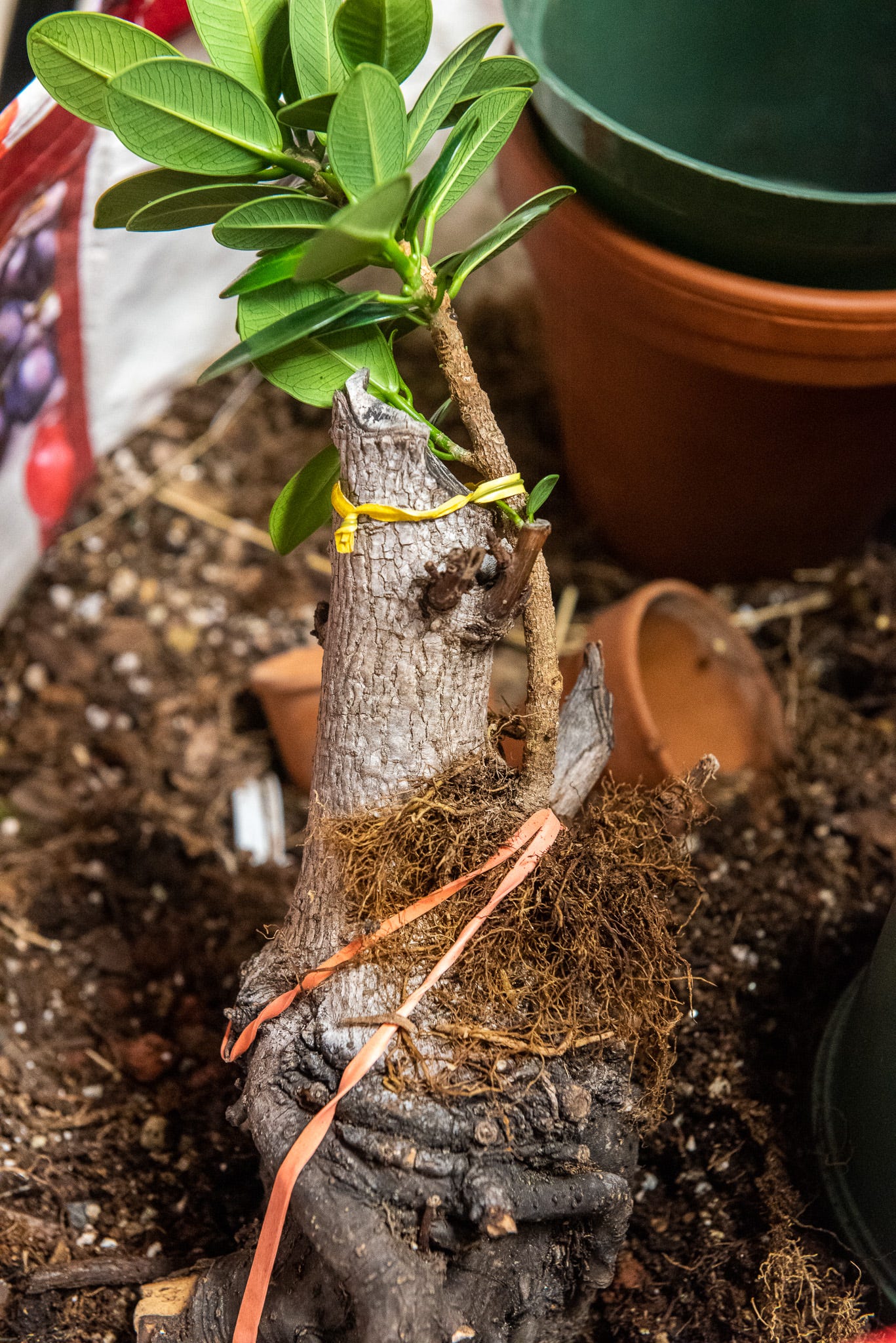The life cycle of a strangler fig reads like a horror film treatment. Picture this: A passing bird poops on a tree branch and passes on a curse in the form of a fig seed. The seed germinates in a groove of bark, nourished by rainfall and minerals in the bird shit. It shoots branches up in search of light and drops curtains of roots towards the ground. The roots anchor in soil and slowly spread around the host tree’s trunk, girdling it. Meanwhile, the fig’s branches climb higher and higher, breaking through the host’s canopy to establish its own above. The host dies of thirst or starvation. As it rots away, it reveals a hollow columnar strangler trunk spiderwebbed with aerial roots. Soon the strangler is all that remains.
Can you imagine? You foster an abandoned seedling in the crook of your arms and help it grow, only to watch it encircle your body and squeeze you dry. My mom is preparing to comment that this is something like parenthood.
I’ve wanted to try a strangler fig style bonsai since reading ficus guy Jerry Meislik’s tutorial early last year. The method is similar to root-over-rock designs that feature prominent roots draped over a stone. Over several years, you grow the trees in deep pots as you train the roots to clasp the rock or tree trunk. Then you spend a few more months lowering the soil line to expose the roots to air. It’s a good exercise in patience, since all the important growth happens beneath the soil and all you can do is wait.
This sweetgum died of a rogue infection some time ago. I couldn’t let go of the trunk; its profile reminded me of a cartoon volcano. Now it gets to live on in a new project.
I played around with a ficus microcarpa cutting to find a natural-looking spot to “germinate” the strangler. This branch nook seems promising.
There are better ways of securing a cutting to a piece of deadwood, but considering the minimal roots on the cutting, this is going to require lots of sacrificial growth and regular check ins. Once I have long and healthy roots I can start wrapping them around the sweetgum. Many tutorials recommend nailing the young tree to the deadwood, to help them fuse.
Now comes the substrate. Pumice is naturally porous and gives roots easy access to oxygen. Yamadori collectors plant freshly harvested trees in pure pumice to help stressed roots recover. I figure it should work for my young cutting.
I cut the bottom off a plastic pot to make a “collar” for the upper part of the tree, then filled it with more pumice. A couple weeks later I saw new growth, a sign that the tree was ready for fertilizer.
It’s been a month since planting and the fig is growing well. If it looks healthy in six months I’ll dig it up to check on the roots. For now I wait—and water daily, and check the bottom of the pot for signs of root growth. See that tiny bud on the lower left of the cutting, just above the soil line? I suspect that will become the future of the tree; everything above is sacrificial growth to fuel root development beneath the surface.
A funny thing about the strangler fig. Fig trees in the tropics fill a similar role to oaks in temperate regions. Both are considered keystone species that are vital for supporting whole ecosystems. Most stranglers can bear fruit year around, and their drapey roots and hollow trunks provide a singular kind of habitat for wildlife.
Ficus may be ruthless—ask anybody who planted one too close to a septic tank—but they’re also generous. A strangler fig swallows its host, and in turn can become a forest.
Tree reading
Rejoice! Curbside composting is coming to all five boroughs of New York City. [Gothamist]
An appreciation of ground cover plants, the “secret weapon of every great garden.” [Rootbound]









Great narrative in this post Max. Some of it terrified me. 😂